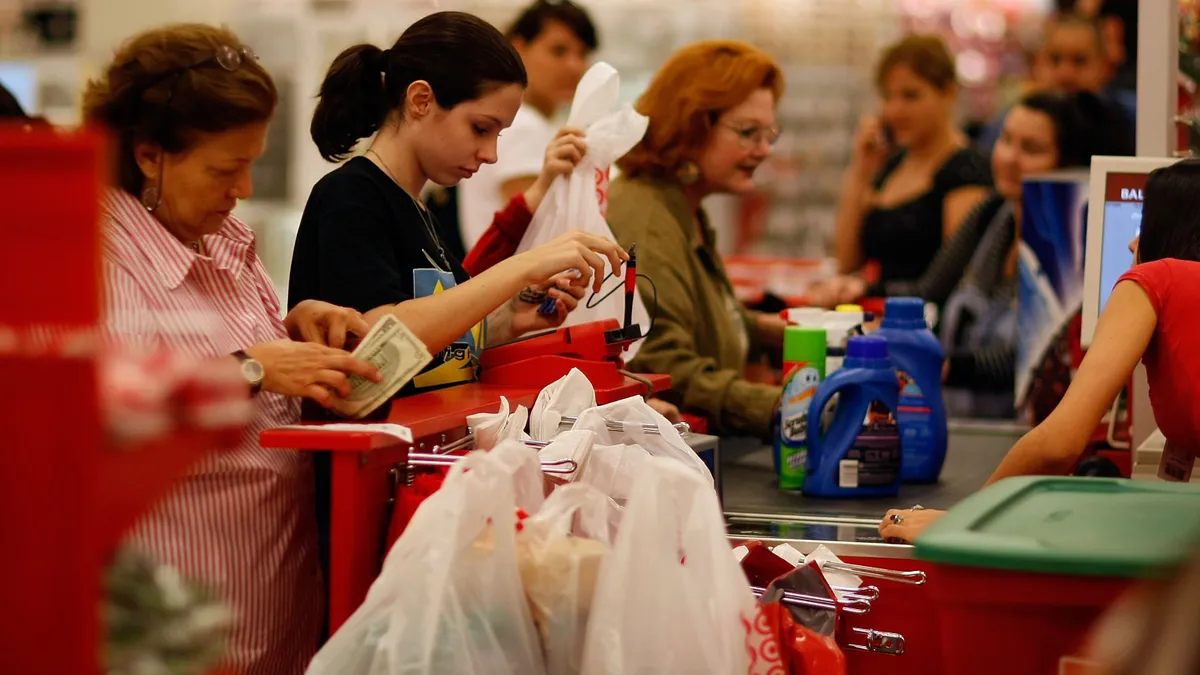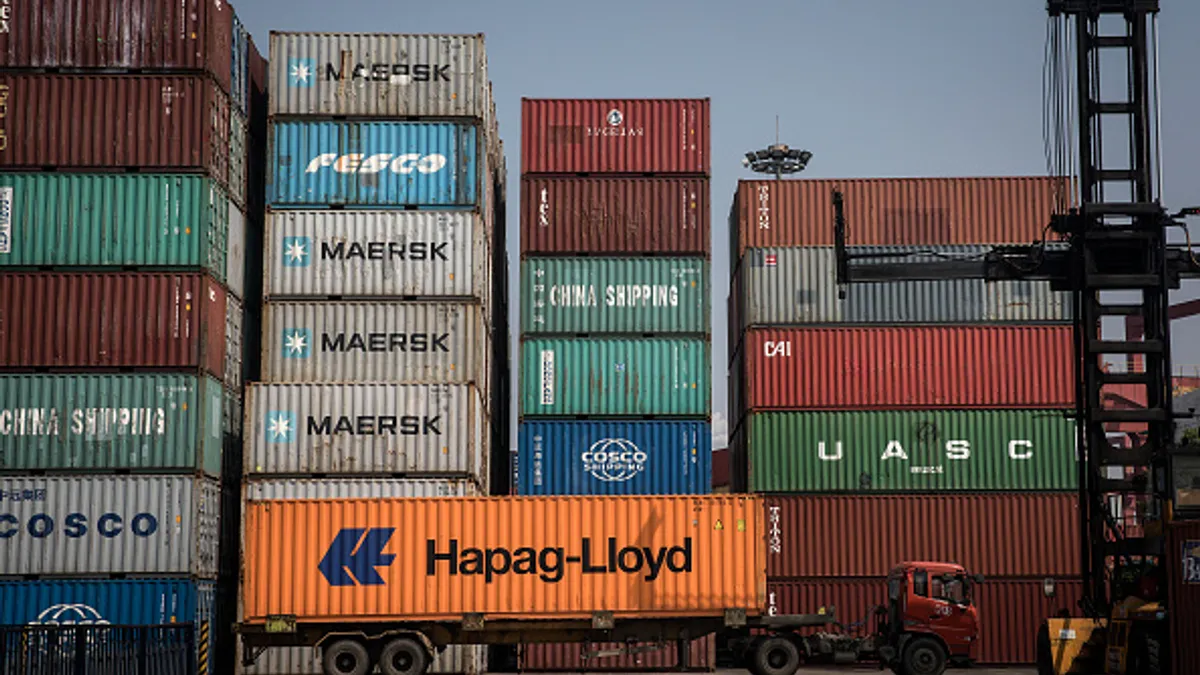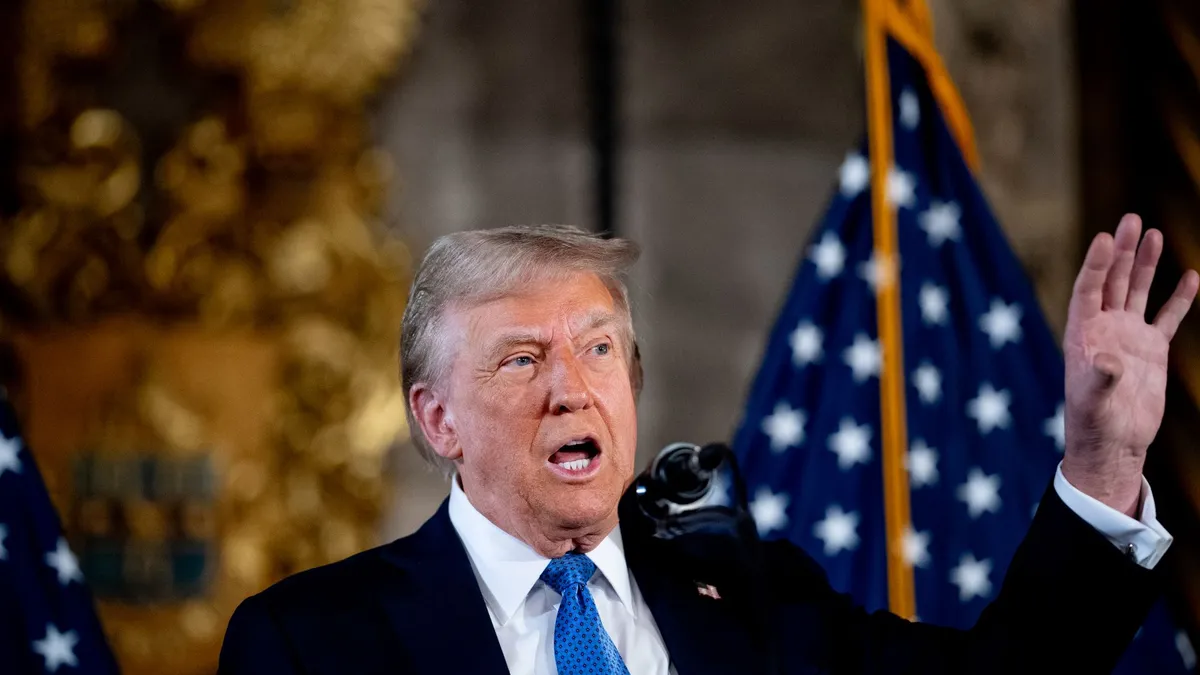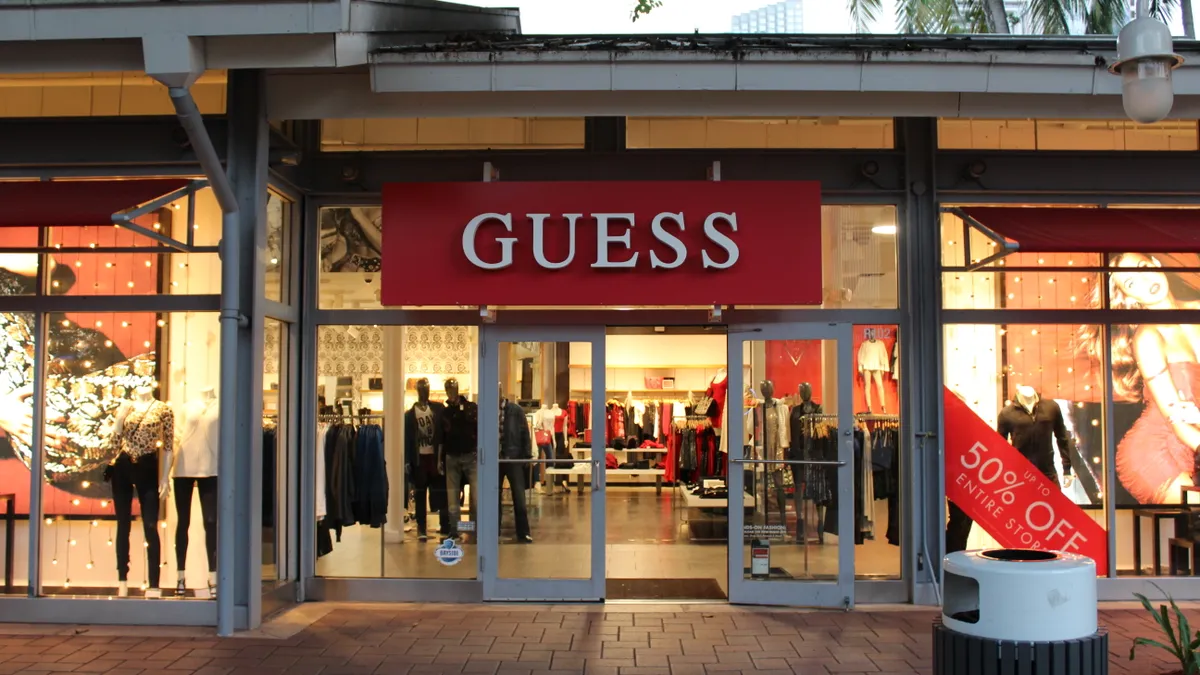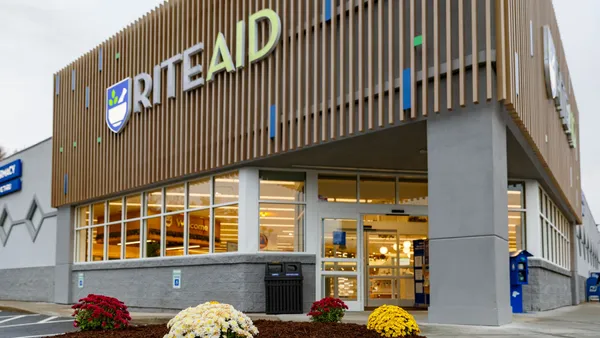Amazon’s blockbuster $13.7 billion deal to buy Whole Foods Market rocked the retail industry — to say the least.
After the news hit early Friday morning, shares of Target fell 5%, Costco 7%, Kroger 9% and SuperValu 14%.
Through the terms of the deal, Amazon will pick up some 460 stores in 43 states, many in key, affluent areas. Analysts say it’s not a question of whether the e-commerce giant’s newfound brick-and-mortar presence will disrupt the retail industry — but when.
“[Amazon has] blown apart the definition of retail,” Greg Portell, lead partner in the consumer and retail practice of consulting firm A.T. Kearney, told Retail Dive. “We’re not talking omnichannel. We’re talking about companies that sell stuff regardless of how it gets sold. Let’s move product — whether product is a shirt, a computer or an orange. That’s an important element because they’re putting their money where their mouth is and creating a retail environment without boundaries.”
Discount retailers like Target stand to lose the most. The big-box retailer has considerable overlap with Amazon’s more affluent Prime customers while struggling over the years to sprout a successful grocery strategy.
Grocery is by no means Target’s bread-and-butter, so to speak: The category only makes up about one-fifth of the retailer’s annual sales. Since its debut, Target grocery has been more of an afterthought for the company — a convenient way for shoppers already picking up apparel, home decor or cleaning supplies to make quick “fill-in” trips while they’re already at the store. But CEO Brian Cornell acknowledged earlier this year that those pickups are eroding, and it’s time for a new model. Now Amazon is moving in on its home turf.
The e-commerce giant's Whole Foods takeover could further complicate Target's more recent push for healthy, organic and grab-and-go food items, emphasized in a $7 billion plan to overhaul existing stores over the next three years.
As shareholders grow impatient, analysts say Amazon’s aggressive move into the space amplifies the need for Target to chose: Is it time to go all-in on grocery or simply throw in the towel?
Amazon's threat to discounters
Just over 40% of U.S. customers bought something from Amazon last year and 60% of millennials are Amazon buyers, according to data from the NPD Group’s Penetration Index. On the other hand, 20% of American consumers bought at least one item from Whole Foods last year. Among millennials, the number is higher — 24 % — which is “extraordinary penetration” for a grocer with 460 stores, NPD said.
With those stores, Amazon could do a number of things, including solving last-mile delivery challenges involved in delivering fresh groceries, implementing store innovations like its checkout-free Amazon Go technology, and making it easier for shoppers to access Amazon’s successful private label products — such as its baby wipes and battery brands.
As Amazon adds groceries to its shopping ecosystem, some retailers will fare better than others. "Kroger, Target, and Costco will face the most pressure here. This competitive pressure is due to proposition, geography and audience overlap with Whole Foods and Amazon,” Matt Sargent, senior vice president at Frank Magid and Associates, told Food Dive in an email. “Both Target and Costco already face competition from Amazon, and the combined Whole Foods and Amazon proposition will step up its ability to compete with Kroger."
"Kroger, Target, and Costco will face the most pressure here."

Matt Sargent
President at Frank Magid and Associates
Costco is better insulated than some other retailers because its business model is so unique, Barbara Kahn, director of the Baker Retailing Center at The Wharton School of the University of Pennsylvania, told Retail Dive. Costco makes its margin on memberships, not product, and sells gas, an important differentiator as it's a product people must physically obtain.
There is one aspect of grocery where Target has made progress: natural, organic foods and healthy snacks — a niche found at Whole Foods. While the assortments may fall into similar territory, Portell contends that Whole Foods and Target shoppers are very different.
“There will be overlap when you’re the size of the company those companies are. When you think about that organic healthy shopper, that isn’t necessarily cheap chic, that’s expensive chic,” he said. “There is overlap on the customer base, but Target is trying to attract the lower end of that shopper. Whole Foods shoppers are not price sensitive and that defines them differently.”
Target’s spoiling grocery ambitions
Target has struggled over the years to carve out a defensible grocery strategy. The retailer has struggled with spoilage issues with perishable losses higher than the industry average because customers aren’t coming in often enough before the food goes bad. But it has taken steps to rejuvenate the segment, notably by giving employees special training on dealing with packaged and fresh food and successfully interacting with grocery customers.
But the company’s grocery team has also suffered from instability, making a clear grocery strategy difficult to achieve. In 2015, Cornell brought on Anne Dament, whom he worked with as CMO at Safeway, to head the grocery business, but she stepped down just 18 months later. In late March 2017, Kroger veteran Jeff Burt took over as grocery chief amid what Cornell described as a “seismic shift” in the retail industry, but the path forward for Target grocery has not yet been defined.
“There’s no way to look at that part of the business and be excited about the track record so far,” Portell said of Target’s grocery offerings. “It screams to be stabilized and ultimately fixed. Fixing may be getting out of it. It changes the strategy, at some point [Target] needs to decide they are in grocery and get serious about it, potentially with its own acquisition, or they need to build a merchant strategy that doesn’t depend on grocery as the path forward.”
“There’s no way to look at that part of the business and be excited about the track record so far. It screams to be stabilized and ultimately fixed."

Greg Portell
Lead partner in the consumer and retail practice of A.T. Kearney
In a statement emailed to Retail Dive regarding Amazon’s takeover of Whole Foods, a Target spokeswoman defended its ambitions in the grocery business: “Food and beverage is a key category for Target, representing about 20% of our annual sales. More importantly, it’s part of our guests’ shopping journey and something they want to find at Target. As we’ve shared, we are on a journey to create a differentiated experience in food and beverage. While the work won’t be done overnight, we are committed to getting it right for the long term and are encouraged by the progress that we are making.”
With an Amazon-driven Whole Foods in the works, Target has between 12 and 18 months to refocus its grocery strategy, Portell predicts — and it can do it in one of two ways. “Either they’ll go similar to Amazon with Whole Foods and pick a niche player that allows them to carve out a defensible position, or a blockbuster industry-changing player. What would be bad is to be caught in the middle,” Portell said, adding that Albertsons or a regional grocer like Wegman’s would be a good play.
While there are certainly crossovers between Target and Amazon and Target and Whole Foods, the key differentiator for Target is its penchant for grab-and-go items, which analysts see as a challenging niche to get right.
“Target is smart to go after ready-made foods and have basic necessities while in the stores,” Shelley Kohan, VP of retail consulting at RetailNext, told Retail Dive. “Keeping SKUs in check with necessity items, they have to do that — grab and go, easy dinner nights. I’m not sure if they try to go full-on grocery and go after Walmart or Kroger ... And I don’t think that’s their desire.”
Grocery-on-the-go is difficult for a company like Target to sell as a convenience to shoppers, considering the enormous size of many of its stores. “Gas stations, convenience stores, pharmacies — those stores have had more success," Portell said. "You can dip out of a 10-aisle store, but Target’s stores are much larger and complicated. Swinging by a packed parking lot to go to a Target is tough if you’re going for milk. You might as well go to a mainstream store.”
Downsizing its store formats is a work in progress for the retailer. Since 2012, the company has been rolling out small format stores to three key markets: urban areas, dense suburban areas and college campuses. Through focus groups, the company determines the right balance in assortment, with grocery generally making up about 20% of each store, Kristy Welker, PR specialist at Target, told Retail Dive.
“The majority have fresh produce and grab-and-go food as well, and we look at the guests where these stores are serving. If it’s downtown, we know there are lots of offices nearby and we’ll have grab-and-go sandwiches and beverages for guests to grab items for lunch,” she said, adding that Target currently has 36 such small format stores as well as plans for 30 new ones this year and more to come in the next two years.
“They’re smart about the SKU assortment they're offering and I do think that will become a better shopping trip for millennials and Gen Z," Kohan said. "Moving forward, these groups don't like large stores, so it’s a great strategy as long as locations are in the right markets."
Portell said there’s a chance that Target may throw in the towel altogether. “Target and other grocery retailers have to get serious about their solutions in the space,” Portell said. “They’ve been able to live in a trial-and-fail, trial-and-fail environment without a lot of pressure to get it right. There hasn’t been a true competitive threat staring them in the space. But something would happen. Now that’s happened.”
What it would take for Target to compete in grocery
According to analysts, there are three key things Target needs to leverage if it plans to step up to Amazon and other competitors in the grocery aisle: talent, loyalty and analytics.
“I don’t see a way for them to get into any category expansion without that customer data at the center of anything they do. They’re betting their customer management strategies are on par with Amazon. I think they can be,” Portell said. “The other element is they should be ready to overinvest in the phase to make sure they get it right. If they’re negotiating with talent and doing it with traditional pay and comp models — that’s not working.”
If Target wants to be a serious player in grocery, it needs to go after the 10 leading fresh merchants in the space, “poach them and put together a killer team,” he said.
With the right management in place, the company would be in a stronger position to ramp up its loyalty programs, which already resonate positively with many of its core customers. New programs such as Target Restock, which gives REDcard holders a dedicated online experience to buy household essentials and convenience products that can be packaged at a nearby store and delivered the next day, could be the company’s answer to Amazon Prime.
"[Amazon] won't allow someone to say, ‘You are a retailer. You are a grocer. You are X, Y, Z."

Greg Portell
Lead partner in the consumer and retail practice of A.T. Kearney
While it’s unclear exactly how Amazon will utilize its new stores, data and technology are poised to play a significant role in its reinvention of the store, analysts say, meaning discounters like Target will have to take data collection more seriously and find new ways of leveraging customer purchase information to keep shoppers coming back for more.
“When Target and Walmart were adding apparel, the Walmart strategy was completely different from Target. And they’re different. Target needs to implement that same differentiated project and little higher quality to the grocery sector similar to apparel,” Kohan said, adding that partnering or collaborating to gain expertise in the field of grocery would be a smart move to bolster its grocery offerings.
To Portell, Amazon’s first significant push into brick-and-mortar signifies it won't be constrained by categories: “They won't allow someone to say, ‘You are a retailer. You are a grocer. You are X, Y, Z.’”
While Amazon is taking clear steps to become Target's biggest competitor online and in stores, it remains to be seen how quickly the e-commerce giant will learn to walk in physical retail.
“The interesting thing will be how [Amazon] handles the integration or lack of. They haven’t made any other material acquisitions on this scale,” Portell said. “If they are thinking series of acquisitions, I’d be surprised in the near term and they need to make sure they get it right.”
Laura Heller contributed to this story.


